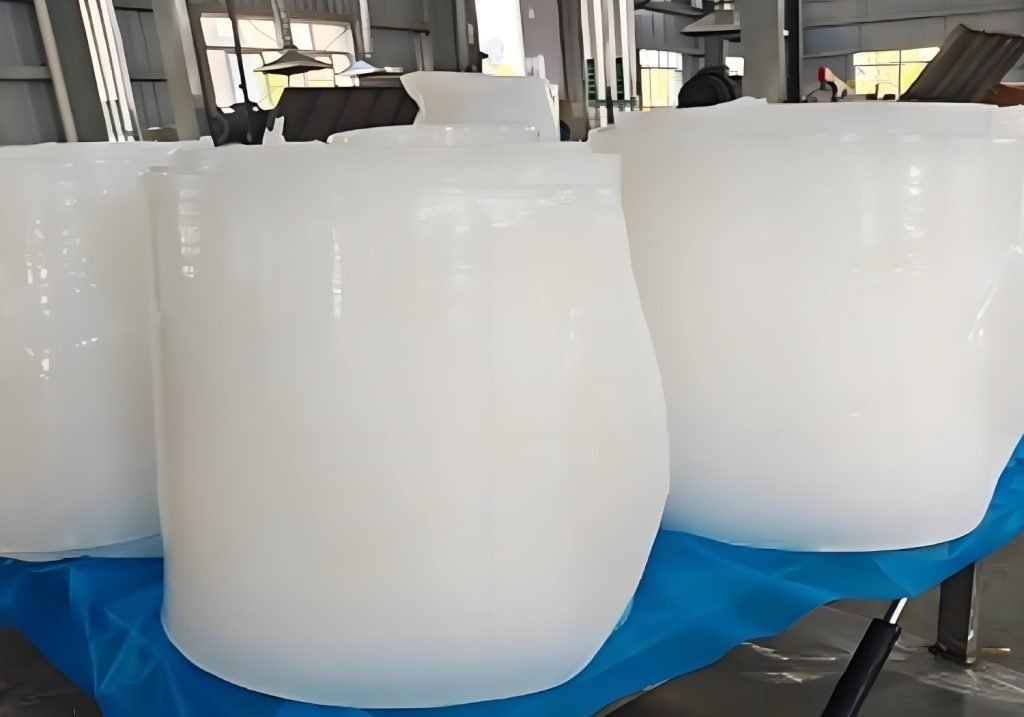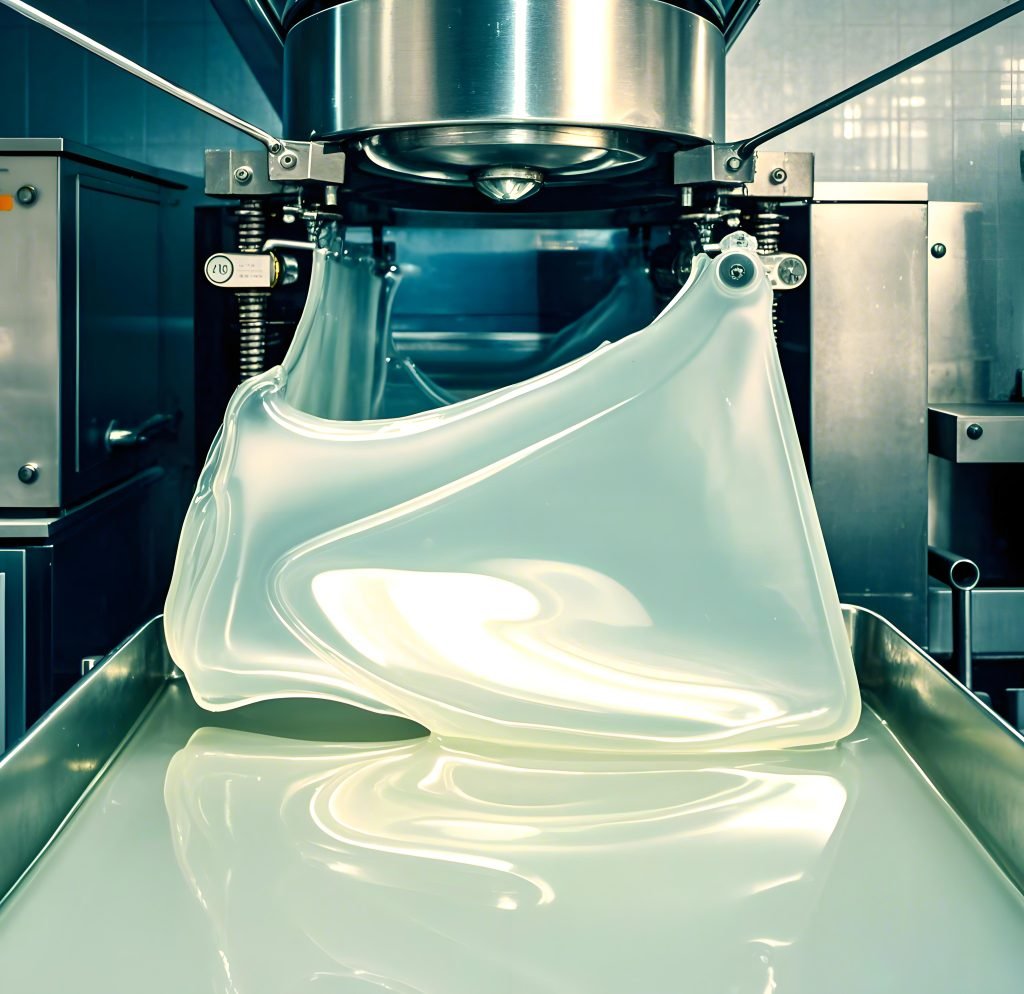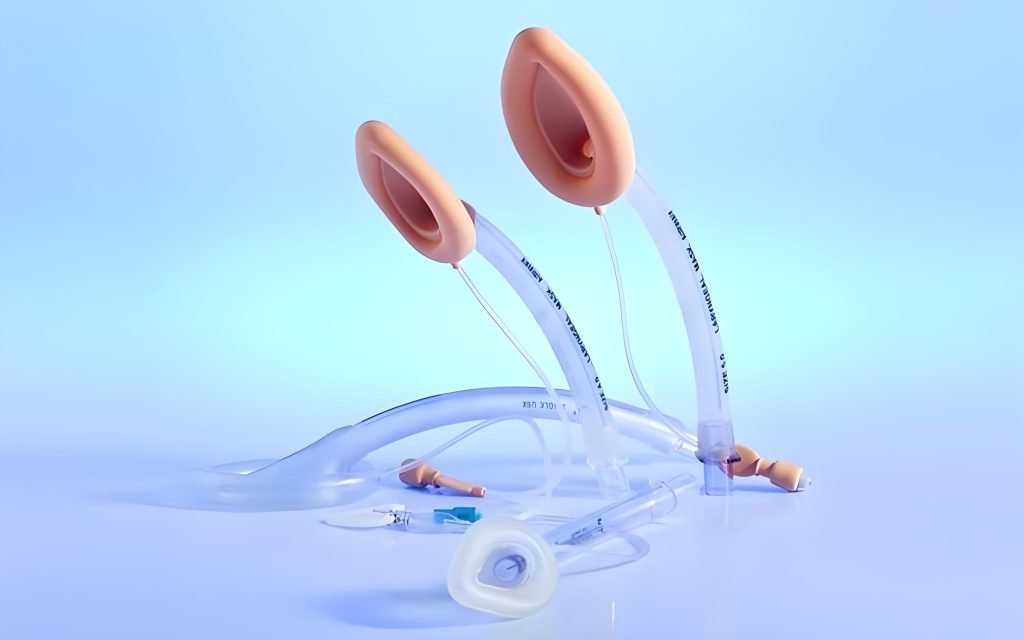Have you ever encountered questions when evaluating silicone rubber products for your project, especially a safety-critical project such as in the healthcare industry? Most likely, you would come across both a high-consistency rubber (HCR) and a liquid silicone rubber (LSR). They are both high-quality products, but distinctly different with their own properties and best use.
You can think of it in terms of tools. A hammer is the best tool to drive nails but no one would use a hammer for tightening a screw. You can think of HCR and LSR in a similar way, and if you understand the similarities and differences between HCR and LSR silicones, you should be able to select the best silicone for your application. So, let’s look at these two silicone titans.
Understanding HCR: The Traditional Silicon
Think of HCR as the more traditional form of silicone rubber.

Form and Processing
High consistency rubber starts out as a solid or doughy substance. You cannot easily pour HCR into a mold when you want to make a part. HCR requires a process called vulcanization (or curing) before you have a final part that is flexible and durable. This curing process is like a type of silicone rubber processing that utilizes high temperature vulcanizing and usually uses a curing agent, involving heat and pressure.
Often, HCR products are manufactured using various processes, typically compression molding– when the solid rubber is set into the mold cavity and then compressed with heat and pressure. Another common process would be the extrusion process– when the HCR is at a certain temperature and plastic, then forced through a die to create a long profile or shape, such as tubing or gaskets.
In other cases, companies still use calendering, the process of plastically deforming the dried and cured rubber by pressing it into a flat sheet between two rollers, but only for specific applications. All the methods have been around for a long time and can produce durable and robust products.
Key Advantages
HCR brings some impressive qualities:
Great Mechanical Strength: HCR has high utility and can withstand a lot of forces before breaking. If you need a part that needs to withstand high forces, HCR should be a consideration.
Excellent Tear Resistance: It’s not easy to rip or tear HCR. This is crucial for parts that might experience rough handling or potential snags. Certain formulations can even achieve the properties of a high tear strength silicone rubber.
Durability: The life expectancy of parts made out of HCR also tends to be quite high, even under the stress of use.
Wider Hardness Range: HCR can be found in a much larger range of hardnesses, from fairly soft and flexible to relatively hard and rigid, giving you many more options with respect to applications.
Typical Uses
High consistency rubber is prevalent across many industries due to its resilience and toughness. HCR is used in gaskets and seals for extreme environments, automotive parts that need longevity, and industrial tubing. It is used mostly in industrial applications, but is also sometimes found in consumer situations, such as motor vehicle keyboard pads, to provide the right tactile feel and resilience. Some specialized grades can also be high temperature resistant silicone rubber.
HCR in Medical Applications & Certifications
There are medical grade liquid silicone rubber applications available where HCR could be suitable for use, such as silicone tubing, seals for medical devices, and other designed applications that require high mechanical properties and tear resistance.
In order to determine if an HCR has medical grade certifications, it is a matter of identifying materials that will be able to meet the biocompatibility requirements defined in standards like ISO 10993 that dictate if a given material can be used in body contact. You’d better contact your supplier and manufacturer to make sure your selected grade of HCR meets the relevant medical qualifications for your device.
Exploring LSR: The Versatile Liquid
Now, let’s shift our focus to its more fluid counterpart: Liquid Silicone Rubber.

Form and Processing
As the name indicates, LSR, liquid silicone rubber, is a liquid silicone material. Generally, liquid silicone rubber is a two-part system, with a base part and a catalyst part, that are mixed just prior to processing. LSR liquid silicone rubber is unique for utilising its rapid platinum-catalyzed heat-curing. Once liquid silicone is injected into a pre-heated mold, it almost instantly turns solid into the finished part.
The primary processing method for liquid silicone rubber is injection molding. This is a highly automated and efficient process. The two liquid components are precisely metered, mixed, and then injected into a closed mold cavity under pressure. The heat from the mold accelerates the curing reaction, and once cured, the part is ejected. This process is known for its speed, accuracy, and ability to produce complex, intricate geometries, even those with thin walls.
Key Advantages
Liquid silicone rubber has its unique characteristics that make it very appealing for a variety of applications, especially for the medical industry:
Excellent Flow: Since liquid silicone rubber is a liquid, it will fill even the most complex and detailed shapes completely without flaw.
High Precision: LSR injection molding allows for very tight tolerances and consistency of size.
Biocompatibility: Many grades of liquid silicone rubber are specifically designed to be biocompatible. This means they can be safely introduced into the human body without showing any toxic reactions, which is a definite plus for medical devices.
Easy Sterilization: Liquid silicone rubber can be sterilized by many means. It can handle autoclaving (steam sterilization), gamma irradiations, and accumulated dose ethylene oxide methods of sterilization. All of these aspects are essential for a medical application. Certain grades can also be high temperature resistant silicone rubber.
Cleanliness: The platinum-catalyzed curing process tends to be very clean, with fewer byproducts compared to some HCR curing methods.
Typical Uses
As a result of these biocompatibility and sterilization properties, as well as precision processes, liquid silicone rubber is widely used in the medical device industry. It is used in seals and O-rings in medical equipment, flexible components on catheters, diaphragms for pumps, and much more.
LSR liquid silicone rubber is used where precision, biocompatibility, and sterilization are required, so not exclusively for medical. LSR is also used in baby products like bottle nipples and pacifiers, in kitchen implements such as spatulas and baking molds, and in many electronic components where flexibility and toughness are required.
LSR for Medical Applications & Certifications
The natural biocompatibility and sterilization properties are what make the polymer the material of choice for so many areas of healthcare. Once you have determined the need for medical-grade LSR, the most important consideration is making sure it complies with the vast regulatory requirements. FDA approval is the clearest indicator of being able to use a given material for medical uses in the U.S.
In many cases, certification to ISO 10993 standards regarding the biological evaluation of medical devices is a requirement as well. All of these standards and certifications indicate that the LSR liquid silicone rubber materials have been evaluated and tested to ensure safe use for their intended medical purpose.

HCR vs. LSR: A Direct Comparison
Now that we are equipped to decide on each material, we will compare high consistency rubber and liquid silicone rubber head-to-head based on a few common criteria:
| Feature | High-Consistency Rubber (HCR) | Liquid Silicone Rubber (LSR) |
| Molecular Weight | Significantly higher, contributing to its solid, dough-like consistency. | Significantly lower, resulting in its liquid form and lower viscosity. |
| Processing | Necessitates methods like compression molding and extrusion, where the material is physically shaped under pressure and heat over a longer curing cycle. | Allows for efficient injection molding with rapid, platinum-catalyzed curing. |
| Curing Mechanisms | Slower, often peroxide or platinum-based; Requires more heat and time for vulcanization to build elasticity via cross-linking. | Faster, almost always platinum-catalyzed addition; More efficient with shorter cycles and cleaner, fewer byproducts. |
| Tear & Abrasion Resistance | Generally exhibits higher tear strength, making some grades a high tear strength silicone rubber, and abrasion resistance. | Often exhibits lower tear strength and abrasion resistance compared to HCR. |
| Flexibility & Elongation at Break | Wider hardness range; Less flexible in thin sections; Variable elongation | More flexible, especially thin-walled; Higher elongation |
| Compression Set Resistance | Typically lower, meaning it might not return to its original shape as well after compression. | Often surpasses HCR, exhibiting a better ability to return to its original shape after compression. |
| Cost | Lower material cost potentially offset by higher processing costs for complex/high volumes. | Higher material cost potentially offset by lower per-part costs for high-volume production due to automation. Consider the total cost, especially for medical grade liquid silicone rubber. |
Choosing Between HCR and LSR: Key Considerations
Selecting your silicone rubber for a medical application is crucial. Here are a few key points to keep in mind:
Essential Selection Factors
Hardness requirements: What kind of flexibility or rigidity does your part require? High consistency rubber has a larger range of hardness, but liquid silicone rubber can cover the needs of most medical applications.
Tear Resistance Needs: Will the part be subjected to stress that could cause tearing? If so, HCR’s high tear strength silicone rubber properties might be an advantage.
Compression Set Requirements: Will the part be under constant compression? If it is important for the part to hold its original form after compression (e.g., a seal), LSR will typically render more reliable results.
Elongation Requirements: Will the part be required to stretch or deform significantly during use? LSR liquid silicone rubber will have a greater elongation at break value.
Part Complexity and Size: For complex parts with thin walls or tight tolerances, LSR is usually preferred due to better flow and injection molding attributes.
Production Volume: How many parts do you want to manufacture? For high volume production, with complex parts, liquid silicone rubber injection molding would be more feasible and generally cheaper with the automation of the process.
Application-Specific Needs
Think specifically about the demands of your medical device. Will it experience significant mechanical stress? Does it need to conform to complex anatomical shapes? Will it be sterilized repeatedly? The responses to those questions will assist in evaluating the pros and cons of high consistency rubber and liquid silicone rubber.
For example, if the seal for your minimally invasive surgical instrument needs a biocompatible material that has consistency and precision, then LSR may be the best option. However, if the gasket for your medical pump is designed to be strong, then you may be satisfied with the characteristics of a medical-grade HCR.
Medical Grade Importance
When dealing with any application in healthcare, the significance of medical grade liquid silicone rubber is immeasurable. Whatever silicone rubber you select, ensure that it has the appropriate certifications for biocompatibility (e.g., ISO 10993) and meets appropriate regulations (e.g., FDA). Do not compromise the material when it involves patient safety. Always request material certifications and work with suppliers that have proven histories in the medical device industry.
Conclusion
Ultimately, the choice you make as to whether to use HCR or LSR is going to depend on your application’s individual demands. High consistency rubber provides excellent mechanical properties and a wider hardness range and is a reliable material for durable components. For applications where precision, biocompatibility, and ease of sterilization are critical properties, liquid silicone rubber provides unchallenged performance as the material of choice for a vast array of medical devices.
Regardless of which silicone you choose, Fecision provides the engineering and manufacturing know how to produce high-quality, accurate results. Let us help you with:
- Precision Mold Tooling: Our engineers design optimized molds to produce accurate and consistent HCR and LSR parts.
- Advanced Manufacturing: Our injection molding process uses advanced tools that can achieve complex designs while retaining tight tolerances and high repeatability for both processes with HCR and LSR.
- Medical-Grade Expertise: Our extensive background in biocompatibility and regulations leads to the production of medical devices in certification-compliant materials, including medical grade liquid silicone rubber.
Let Fecision be your resource partner for the development and delivery of high-quality, certification-compliant silicone solutions for your life-critical medical applications.



